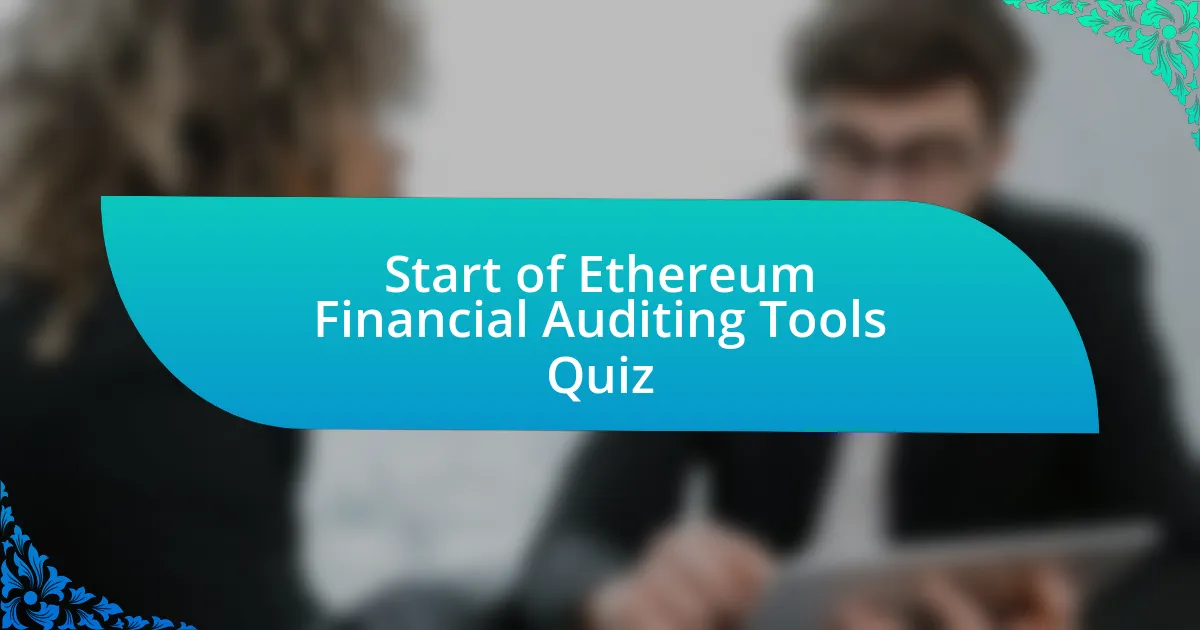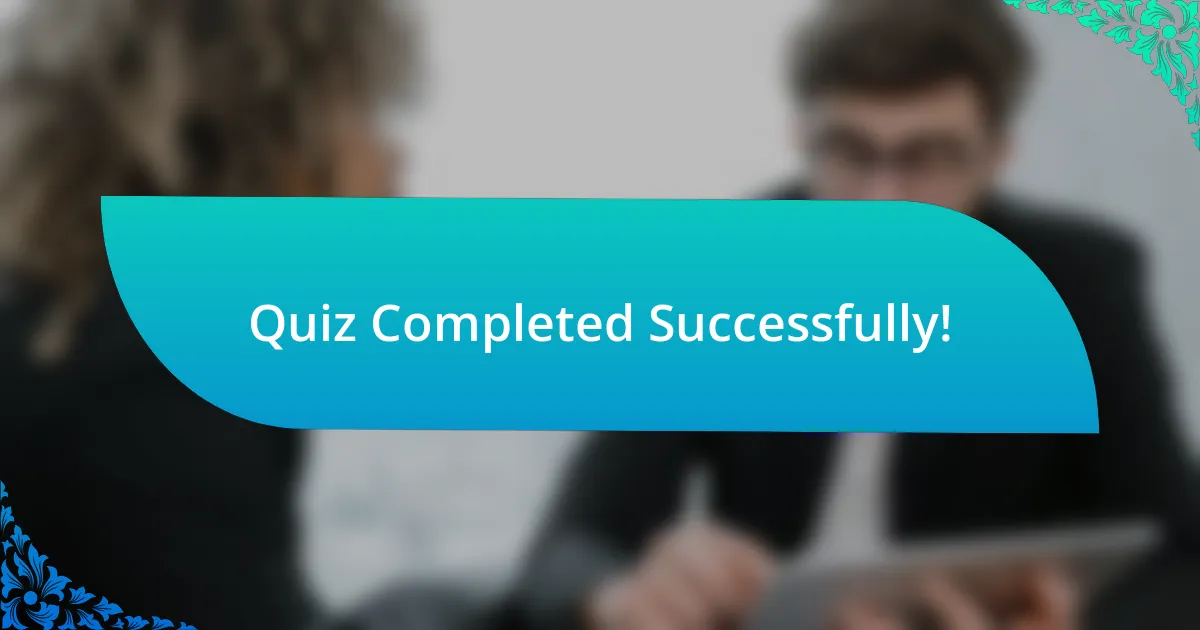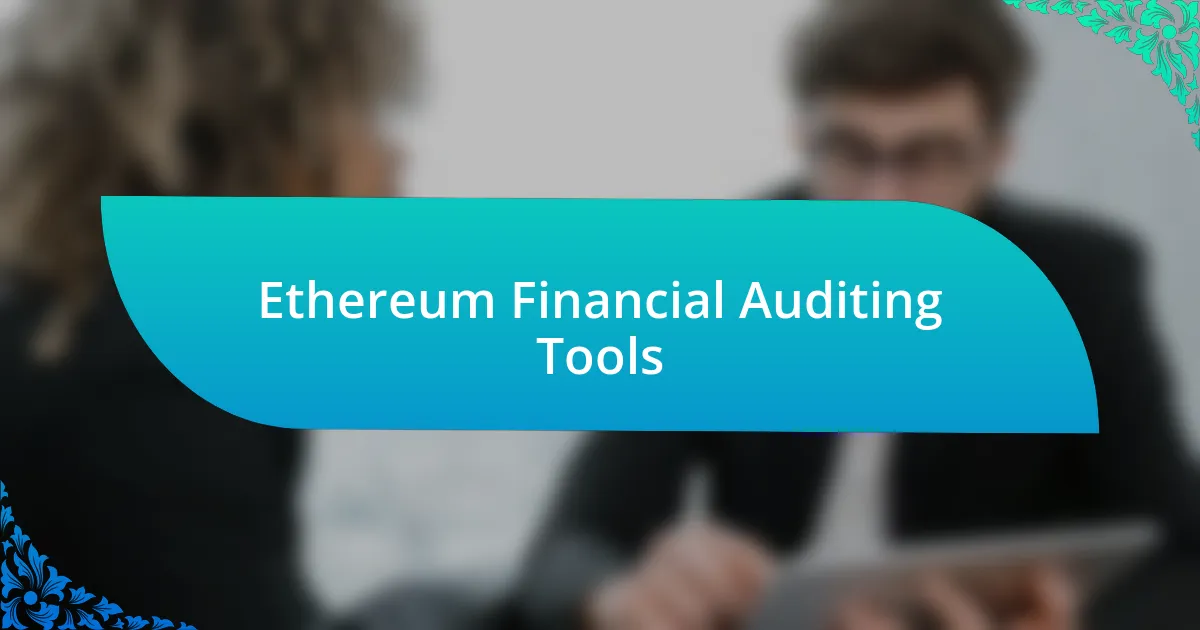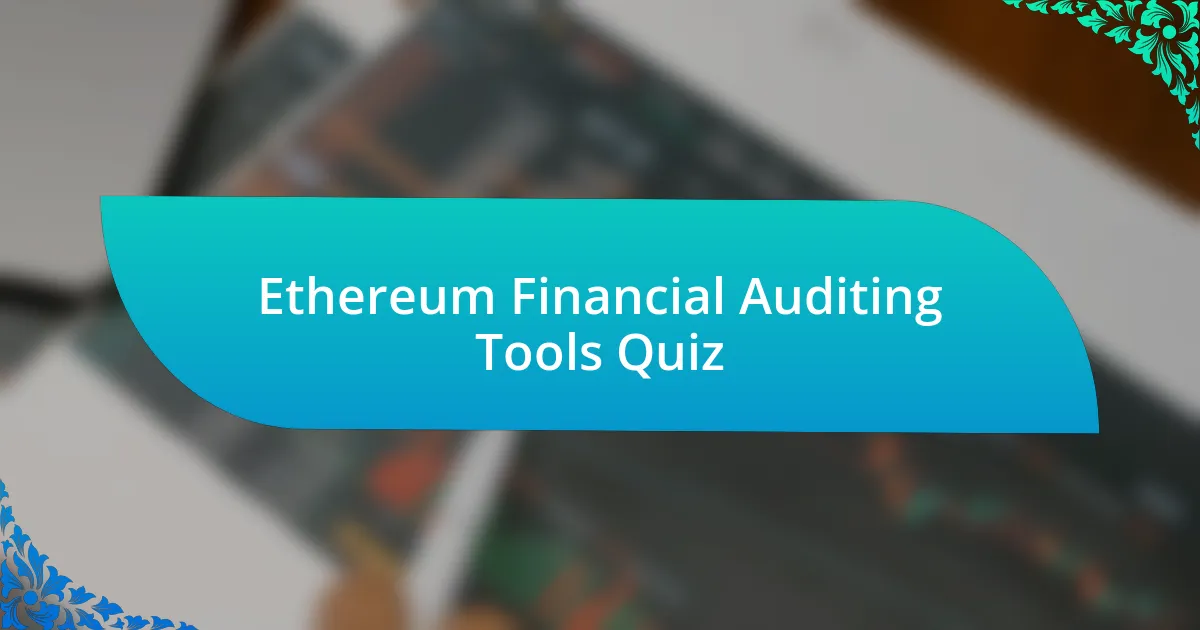
Start of Ethereum Financial Auditing Tools Quiz
1. What is the primary purpose of Slither in Ethereum financial auditing?
- Efficient and accurate vulnerability detection in smart contracts.
- Simulation of smart contract performance under high load conditions.
- Validation of smart contract compliance with user agreements.
- Generation of smart contract user interfaces and front-end systems.
2. Which Ethereum-based fuzzer tool uses the AFL fuzzer method for evaluating smart contracts?
- FuzzTester
- ContractFuzz
- sFuzz
- SmartFuzz
3. What technique does ContractFuzzer use to identify vulnerabilities in Ethereum-based smart contracts?
- Randomly generating code snippets to test function outcomes.
- Reviewing source code for syntax errors and style.
- Execution of smart contracts with various inputs to elicit unique behaviors that showcase signs of existing vulnerabilities.
- Analyzing the bytecode structure for common patterns.
4. What is the primary function of Mythril in Ethereum financial auditing?
- Basic code compilation and deployment for Ethereum applications.
- Conducting user experience testing for decentralized applications.
- Simple debugging for traditional programming languages.
- Advanced analysis techniques like taint analysis and symbolic execution to detect vulnerabilities in smart contracts.
5. Which tool integrates seamlessly into CI/CD pipelines for automated security testing?
- MadMax
- MythX
- ContractFuzzer
- Slither
6. What is the name of the cloud-based static analysis tool that uses symbolic analysis to detect vulnerabilities in smart contracts?
- SecureCloud
- SmartGuard
- MythX
- CloudSafe
7. Which tool is designed to identify vulnerabilities related to gas consumption in smart contracts?
- GasAnalyzer
- EtherCheck
- SolidityScanner
- MadMax
8. What is the name of the popular fuzzing tool for smart contract auditing that uses a feedback-guided adaptive fuzzing model?
- FuzzAnalyzer
- SecureFuzz
- sFuzz
- SmartFuzz
9. Which tool models the EVM for logging smart contract runtime behaviors and analysis of logs for reporting security vulnerabilities?
- Mythril
- Slither
- MythX
- ContractFuzzer
10. What is the name of the joint project by ChainSecurity and the Ethereum Foundation that analyzes Solidity smart contracts?
- ContractSecure
- SolidityAnalyzer
- SmartCheck
- Securify
11. Which tool offers a unique approach to smart contract audit and analysis by focusing on early detection of vulnerabilities during development?
- MadMax
- MythX
- Securify
- Remix IDE plugins
12. What is the name of the tool that uses techniques like control flow and static dataflow analysis to detect issues such as integer overflows and non-isolated calls?
- Mythril
- Slither
- Securify
- MadMax
13. Which tool supports popular development environments like Remix, VSCode, and Truffle, as well as Solidity and Vyper?
- MythX
- Slither
- MadMax
- Securify
14. What is the name of the tool that automates the process of assessing contract safety by analyzing dependency structures and compliance patterns?
- Securify
- MadMax
- Slither
- Mythril
15. Which tool is highly accessible and supports various development environments?
- MadMax
- MythX
- Slither
- ContractFuzzer
16. What is the name of the tool that uses symbolic analysis to detect vulnerabilities in smart contracts?
- SmartCheck
- EtherCheck
- MythX
- SolidityGuard
17. Which tool offers advanced analysis techniques like taint analysis and symbolic execution?
- MadMax
- Mythril
- Securify
- ContractFuzzer
18. What is the name of the tool that can analyze contracts on various blockchains, including Ethereum, using only the contract`s EVM bytecode?
- Securify
- MadMax
- Slither
- Mythril
19. Which tool integrates seamlessly into CI/CD pipelines for automated security testing of Solidity contracts?
- Slither
- Remix IDE
- MadMax
- MythX
20. Which tool supports various development environments like Remix, VSCode, and Truffle, as well as Solidity and Vyper?
- ContractFuzzer
- MythX
- Slither
- MadMax
21. What is the name of the tool that uses control flow analysis to detect vulnerabilities in Ethereum smart contracts?
- MadMax
- Securify
- MythX
- Slither
22. Which tool provides detailed reports on gas consumption and optimizations for Ethereum smart contracts?
- MadMax
- MythX
- Securify
- Slither
23. What is the primary benefit of utilizing MythX in Ethereum smart contract auditing?
- Enhanced gas efficiency for contract execution.
- Simplified user interface for contract creation.
- Automated deployment of smart contracts.
- Comprehensive vulnerability detection in smart contracts.
24. Which auditing tool is particularly focused on finding vulnerabilities related to transaction execution?
- Slither
- MythX
- MadMax
- ContractFuzzer
25. What feature distinguishes MadMax in the analysis of Ethereum smart contracts?
- Identifying gas consumption issues.
- Simplifying user interfaces.
- Automatic code generation.
- Reducing transaction fees.
26. What is the usage of symbolic execution in Ethereum financial auditing tools?
- Ensuring high transaction throughput.
- Detecting vulnerabilities in smart contracts.
- Optimizing gas fees for transactions.
- Developing user interfaces for dApps.
27. Which tool allows for manual and automated testing of Ethereum smart contracts to identify security threats?
- Securify
- Mythril
- MadMax
- Slither
28. What is a key characteristic of the ContractFuzzer tool in assessing smart contracts?
- Manual review by experts identifying potential issues.
- Simulation of network conditions affecting transaction execution.
- Execution of smart contracts with various inputs to elicit unique behaviors that showcase signs of existing vulnerabilities.
- Static analysis of source code for compliance checks.
29. Which Ethereum financial auditing tool specializes in automatic security assessment?
- MythX
- Slither
- MadMax
- ContractFuzzer
30. What type of vulnerabilities does Slither primarily focus on detecting?
- Database injection attacks
- Network security issues
- Smart contract vulnerabilities
- User authentication flaws

Quiz Completed Successfully!
Congratulations on completing the quiz on Ethereum Financial Auditing Tools! This journey has likely enhanced your understanding of various auditing methods used in the Ethereum ecosystem. From smart contract integrity to financial compliance, you’ve explored essential concepts that can safeguard investments and promote transparency.
Throughout the quiz, you may have discovered the importance of using the right tools for auditing smart contracts. Understanding the differences between manual and automated auditing processes is crucial. Recognizing the potential risks and how to mitigate them is a vital skill in today’s digital currency landscape.
Now that you’ve completed the quiz, we invite you to delve deeper into the topic. Head over to the next section on this page. There, you will find more detailed information on Ethereum Financial Auditing Tools. Expanding your knowledge in this area can equip you with the understanding necessary to navigate the complexities of Ethereum safely and effectively.

Ethereum Financial Auditing Tools
Overview of Ethereum Financial Auditing Tools
Ethereum financial auditing tools are software solutions designed to analyze and verify financial transactions on the Ethereum blockchain. They help in assessing the accuracy and integrity of smart contracts and tokenomics by examining code, transactions, and financial statements. These tools improve transparency and ensure compliance with regulatory standards, which is crucial for businesses leveraging Ethereum.
Types of Ethereum Financial Auditing Tools
Different types of Ethereum financial auditing tools cater to various auditing needs. These include static analysis tools, which examine smart contracts’ source code for vulnerabilities before deployment. Dynamic analysis tools test contracts in real-time on the blockchain. Furthermore, compliance tools ensure that token sales and ICOs meet legal requirements. Each serves a distinct function in the auditing process.
Popular Ethereum Financial Auditing Tools
Some widely used Ethereum financial auditing tools include MythX, Slither, and OpenZeppelin. MythX offers a comprehensive security analysis platform for smart contracts, combining static and dynamic analysis. Slither focuses on static analysis, providing insights into potential vulnerabilities. OpenZeppelin Audits provide security reviews and best practices for Ethereum contracts, gaining recognition for their thoroughness.
Benefits of Using Ethereum Financial Auditing Tools
Using Ethereum financial auditing tools enhances the security and reliability of projects. They identify vulnerabilities early in the development process, reducing potential financial losses. Additionally, these tools help maintain trust with users by verifying code and transaction integrity. Efficient auditing leads to compliant and robust decentralized applications, essential for long-term success.
Challenges in Ethereum Financial Auditing
Despite their advantages, Ethereum financial auditing tools face challenges. The rapid evolution of blockchain technology creates a knowledge gap in new trends and threats. Tools may struggle to keep up with the complexity of decentralized finance (DeFi) products. Additionally, false positives during audits can lead to unnecessary concerns, requiring experienced auditors to interpret results accurately.
What are Ethereum Financial Auditing Tools?
Ethereum Financial Auditing Tools are software solutions designed to analyze and verify the financial transactions and smart contracts on the Ethereum blockchain. These tools can identify vulnerabilities, ensure compliance with regulations, and validate the correctness of the smart contract code. For instance, tools like MythX and Slither can automatically detect security issues and provide insights into the potential risks associated with the Ethereum ecosystem.
How do Ethereum Financial Auditing Tools work?
Ethereum Financial Auditing Tools operate by employing static analysis, dynamic analysis, and formal verification techniques to inspect smart contracts. Static analysis examines the code without executing it, identifying potential flaws or vulnerabilities. Dynamic analysis involves running the code to see how it behaves in real-time. Formal verification mathematically proves the correctness of the contracts. Tools such as Oyente utilize these methods to ensure safety and functionality, addressing risks before deployment.
Where can Ethereum Financial Auditing Tools be found?
Ethereum Financial Auditing Tools are available through various platforms and repositories online. Popular tools can be found on GitHub repositories or official websites of tool developers. For example, tools like MythX and Slither offer web-based interfaces and API access for users to perform audits easily, providing a range of features suitable for developers and businesses operating on the Ethereum blockchain.
When should Ethereum Financial Auditing Tools be used?
Ethereum Financial Auditing Tools should be used at several critical stages of a smart contract’s lifecycle. It is advisable to run audits during the development phase, prior to deployment, and after any substantial updates or changes. Regular audits help ensure ongoing security and compliance as the smart contract interacts with user funds and data on the Ethereum platform, helping to prevent costly vulnerabilities.
Who benefits from using Ethereum Financial Auditing Tools?
Developers, investors, and businesses that operate on the Ethereum blockchain benefit from using Ethereum Financial Auditing Tools. Developers gain insights into vulnerabilities, helping them enhance code security. Investors can feel more secure when engaging with audited projects, knowing the risks are mitigated. Additionally, businesses using smart contracts can ensure compliance with legal standards and safeguard their financial transactions.

